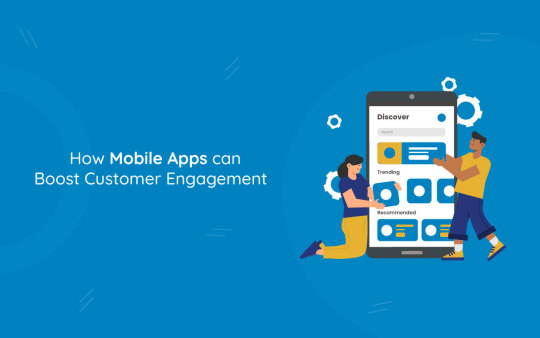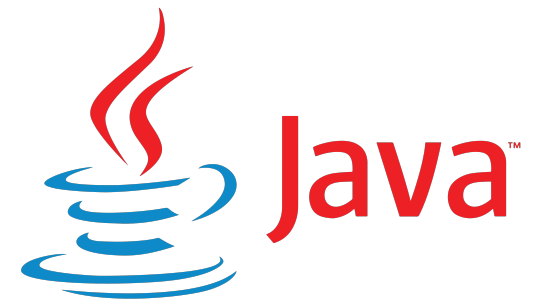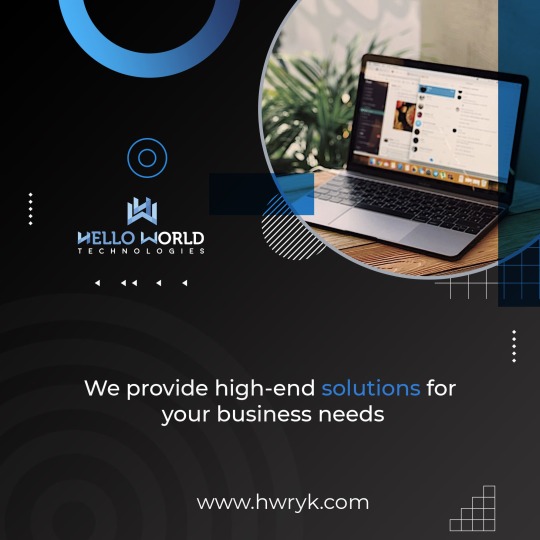#helloworld technologies
Explore tagged Tumblr posts
Text

Хочется положить ее в карман и бежать...
#транспорт#автомобили#машина#красиво#car transport#technology#so beautiful#tumblr#blog#helloworld#тамблер#блог
5 notes
·
View notes
Text
Buildroot App Integration on Allwinner A40i: Step-by-Step
1️⃣ Create package/helloworld directory
2️⃣ Write Config.in + helloworld.mk (case-sensitive!)
3️⃣ Enable in sun8iw11p1_hf_defconfig
4️⃣ make menuconfig → compile → pack

💡 Key Insights:
.mk scripts glue Buildroot’s build system to your app’s Makefile
Error Alert: Directly overwriting .config breaks builds! Use savedefconfig instead
Final binary lands in /bin post-compilation 📦
Allwinner A40i system on module
👉 Contact us: [email protected]
0 notes
Text
Girls Hostel in Knowledge Park 2: A Perfect Blend of Safety, Comfort, and Convenience
Greater Noida, one of the fastest-developing regions of Delhi-NCR, has become a bustling hub for students, professionals, and educational institutions. Among the many educational clusters in the region, Knowledge Park 2 stands out for its concentration of universities, engineering colleges, management institutes, and training centers. With institutions like Sharda University, Galgotias College of Engineering & Technology, Noida International University, and several coaching centers located nearby, Knowledge Park 2 attracts thousands of young female students every year. To accommodate this growing influx, a variety of girls hostels in Knowledge Park 2 have emerged, providing not just accommodation but a secure, nurturing, and community-driven environment for students.

Why Choose a Girls Hostel in Knowledge Park 2?
The location itself is one of the biggest advantages. Hostels in Knowledge Park 2 are situated close to major educational institutions, ensuring students can walk or take a short ride to their campus without the stress of long commutes. This not only saves time but also helps students manage their daily routine efficiently, especially during exam seasons or early morning classes.
But what makes these hostels stand out is the focus on safety and comfort. As a parent or guardian, safety is the top concern when sending your daughter to live away from home. Girls hostels in Knowledge Park 2 are typically equipped with 24/7 security, CCTV surveillance, biometric entry systems, and female-only staff. Many hostels also work closely with local law enforcement and have emergency protocols in place for added peace of mind.
Facilities You Can Expect
Modern girls hostels in the area cater to the specific needs of today’s students. Rooms are usually available in single, double, or triple-sharing options, depending on your budget and preference. These rooms come fully furnished with beds, study tables, wardrobes, fans, air conditioners or coolers, and attached or common washrooms.
Additional facilities include:
Wi-Fi Connectivity for uninterrupted study and leisure
Power Backup to ensure you’re never left in the dark
Daily Housekeeping and Laundry Services for a hassle-free lifestyle
Nutritious Meals (vegetarian and sometimes non-vegetarian) served 2-3 times a day
Common Areas like lounges, TV rooms, and rooftop spaces for socializing
Fitness and Wellness Areas like yoga rooms or small gyms in some premium hostels
The meals provided in these hostels are cooked in hygienic kitchens, and special attention is paid to quality and nutritional balance. Some hostels also have meal customization options or food token systems if you prefer flexibility in dining.
Affordability and Room Types
One of the biggest reasons behind the popularity of girls hostels in Knowledge Park 2 is the affordable rental options. Monthly costs can range from ₹6,000 to ₹15,000, depending on factors like:
AC vs Non-AC rooms
Single vs Shared occupancy
Inclusion of meals and laundry
Attached vs Common bathrooms
Premium vs Budget services
Premium hostels often provide additional features like e-library access, smart TVs, weekend recreational activities, shuttle services, and more, creating a holistic experience for students who want more than just a place to sleep.
Branded vs Local Hostels
The area hosts both branded and locally-run girls hostels. Branded hostels such as those managed by Stanza Living, Zolo, Your-Space, or HelloWorld offer standardized experiences across their properties, app-based service management, regular community events, and professional staff. On the other hand, independent hostels, many of which are family-run, often offer a more homely atmosphere and personalized care, sometimes at more economical prices.
Depending on your preferences—whether you're looking for a tech-enabled lifestyle or a simpler, cozy space—Knowledge Park 2 has plenty of options.
Location Advantages
Besides its academic focus, Knowledge Park 2 offers excellent connectivity. It is well-served by metro stations, autorickshaws, and shared cabs, and is close to Pari Chowk, which connects to Noida Expressway and Yamuna Expressway. Students can easily visit malls, eateries, grocery stores, pharmacies, and recreational hubs without needing to go far.
Moreover, being part of a student-dominated area means you’ll never feel isolated. There's a vibrant atmosphere, student-friendly cafes, local coaching centers, libraries, and more. Hostel communities often celebrate festivals, hold open-mic nights, and conduct wellness sessions, helping you settle in and make lasting friendships.
Final Thoughts
Choosing the right girls hostel in Knowledge Park 2 is crucial for academic success, mental well-being, and personal growth. The area offers an excellent range of accommodations that strike the right balance between affordability, convenience, and security. Whether you're a student just starting college or someone preparing for competitive exams, you’ll find a welcoming, well-equipped, and secure home-away-from-home in this thriving student neighborhood.
#girls hostel in Knowledge park 2#girls hostel in Knowledge park#boys hostel#pg for girls#pg for boys
0 notes
Text

"From cannons to code, the world is still being saved!
atheostech #meme #funny #programming #technology #history #grandpa #spongebob #coding #helloworld #ww2 #war #peace"
0 notes
Text
Salesforce LWC (Lightning Web Component): A Complete Guide

Salesforce, a leader in customer relationship management (CRM), consistently innovates to help businesses automate processes, manage customer relationships, and improve team collaboration. One of its key advancements is the Lightning Web Component (LWC), a framework designed to simplify and streamline Salesforce development. This article will explore what Salesforce LWC is, how it works, and why it's a game-changer for developers and businesses alike. Let’s dive into everything you need to know to get started with Salesforce LWC and maximize its potential in your Salesforce projects.
What is Salesforce LWC?
Salesforce Lightning Web Component (LWC) is a lightweight framework developed by Salesforce that allows developers to create high-performing, responsive, and reusable components on the Salesforce Lightning Platform. LWC is built using standard web components technology and aligns with the modern JavaScript ecosystem, which makes it highly efficient and compatible with other web standards.
Why Did Salesforce Introduce LWC?
Prior to Lightning Web Components, Salesforce developers used Aura components for building custom Salesforce applications. However, with the evolution of web standards and the increasing demand for faster, more reliable web applications, Salesforce LWC emerged as a more efficient framework. This new approach leverages native browser capabilities to enhance performance, simplify code, and improve the user experience.
Core Features of Salesforce LWC
Standards-Based: LWC is based on modern web standards, including ES6+ JavaScript and custom elements.
Component Reusability: Components created in LWC are highly reusable and scalable.
Efficient Data Binding: With reactive properties, data in LWC synchronizes seamlessly across components.
Security: LWC integrates with Salesforce Locker Service, ensuring data security within the components.
Customizable UI: Using the Lightning Design System (SLDS), developers can create responsive and customizable UI components.
Why Should You Learn Salesforce LWC?
As businesses shift towards digital transformation, the demand for skilled Salesforce developers proficient in Lightning Web Components has soared. Learning LWC opens up a plethora of opportunities in Salesforce development and enhances a developer’s capabilities in creating custom applications on the Salesforce platform.
Key benefits include:
Higher Performance: Components created in LWC are faster and more lightweight.
Career Growth: Skills in Salesforce LWC make developers more marketable and open up new career opportunities.
Compatibility with Web Standards: LWC uses modern JavaScript, making it easier for developers to learn and apply skills beyond Salesforce.
Setting Up Salesforce LWC: A Step-by-Step Guide
1. Set Up Salesforce Developer Org
To start developing with LWC, you first need a Salesforce Developer Org. If you don’t already have one, sign up on the Salesforce Developer website. This is a free platform where you can access all necessary tools and resources.
2. Install Salesforce CLI
The Salesforce CLI (Command Line Interface) is essential for creating, testing, and deploying LWC components. To install, visit the official Salesforce documentation for the latest version of the Salesforce CLI.
3. Use Visual Studio Code as Your IDE
Visual Studio Code (VS Code) is the recommended IDE for Salesforce development. The Salesforce Extension Pack for VS Code includes tools that make Salesforce LWC development straightforward.
Download and install Visual Studio Code.
Install the Salesforce Extension Pack.
4. Create a New LWC Component
Once you have set up your environment, creating an LWC component is easy. Run the following command in the Salesforce CLI:
bash
Copy code
sfdx force:lightning:component:create -n HelloWorld -d force-app/main/default/lwc
This command generates a basic HelloWorld component in your project directory.
5. Deploy and Test Your LWC Component
Once your component is created, you can deploy it to your Salesforce Org and test it. Use the following command to deploy the component:
bash
Copy code
sfdx force:source:push
You can add your component to a Lightning App or Lightning Record Page in Salesforce to see it in action.
Understanding the LWC Lifecycle Hooks
Lifecycle hooks are events triggered at different stages of a component’s lifecycle in LWC. They help developers manage the component's behavior effectively. Below are the key lifecycle hooks in Salesforce LWC:
connectedCallback(): Called when the component is added to the DOM.
disconnectedCallback(): Called when the component is removed from the DOM.
renderedCallback(): Called after every render, useful for post-render tasks.
errorCallback(error, stack): Handles any errors thrown by the component.
Salesforce LWC vs Aura Components: Key Differences
Feature
LWC
Aura Components
Standard Compliance
Based on web standards
Proprietary to Salesforce
Performance
Higher performance due to native DOM
Lower performance
Learning Curve
Easier with modern JavaScript
Steeper learning curve
Code Reusability
Higher reusability
Limited reusability
Why Choose LWC Over Aura?
The Aura framework was revolutionary when it was first introduced, but Salesforce LWC offers a more efficient, future-proof approach. With standardized web components, Lightning Web Components provide faster loading times, a simplified syntax, and easier maintenance.
Best Practices for Developing with Salesforce LWC
Use Lightning Data Service (LDS): Whenever possible, use LDS for data access instead of Apex, as it offers performance advantages.
Keep Components Small: Build modular components that are focused on single tasks, making them easier to maintain.
Use Public Properties Sparingly: Limit the use of public properties to avoid unintended changes.
Avoid Using jQuery: As LWC is standards-based, jQuery is often unnecessary and can lead to performance issues.
Frequently Asked Questions about Salesforce LWC
1. What programming languages are used in Salesforce LWC?
Salesforce LWC primarily uses JavaScript and HTML, with support for CSS for styling. The components are compatible with ES6+ JavaScript, making it easy for web developers to get started.
2. Can I use Salesforce LWC with existing Aura components?
Yes, Salesforce LWC can interoperate with Aura components. You can embed LWC within an Aura component and vice versa, making it easier to transition legacy applications to Lightning Web Components.
3. What are the main advantages of Salesforce LWC over traditional JavaScript?
The main advantages include native DOM access, faster rendering times, simplified syntax, and higher reusability across different components and projects.
Top Tools and Resources for Learning Salesforce LWC
Salesforce Developer Documentation: Salesforce’s official developer documentation provides in-depth tutorials and API references.
Trailhead: Salesforce’s free learning platform, Trailhead, offers comprehensive courses on LWC.
YouTube and Blogs: Numerous YouTube channels and blogs provide tutorials on Salesforce LWC, from beginner guides to advanced concepts.
GitHub: Check repositories on GitHub for sample projects and open-source LWC components that you can use in your projects.
Salesforce LWC in Real-World Applications
Salesforce LWC has found its way into various industries and use cases. From automating sales processes to creating custom user interfaces, LWC is pivotal in making Salesforce a more flexible and powerful CRM platform. Businesses leverage LWC to improve their user experience and performance, giving them an edge in today’s competitive landscape.
Case Study: LWC for E-Commerce Customer Support
An e-commerce company integrated Salesforce LWC into its customer support system, allowing agents to resolve customer queries faster and more efficiently. The company noticed:
30% increase in query resolution speed.
Higher agent productivity due to simplified workflows.
Improved customer satisfaction through responsive and personalized support.
Conclusion: Mastering Salesforce LWC
Salesforce LWC is not just a technical framework; it’s a powerful tool that enables developers to build high-performance applications on the Salesforce platform. With standards-based web components and enhanced efficiency, Salesforce LWC is becoming the go-to framework for Salesforce developers. Embracing Salesforce LWC can lead to career growth, business efficiency, and improved user experiences in applications.
0 notes
Text
ATS Picturesque Reprieves Residential Space in Noida

Co-living is sharing space with another person having similar interests, ideology, and philosophy. Co-living has existed over the years paying guests, hostel accommodations. In today's times with soaring housing rents, co-living seems to be the ideal choice. It works for the working class, students, short term and temporary accommodation professionals. Co-living is catching up with today's generation. Many places are offering co-living spaces in Noida. Sharing spaces are gaining popularity in urban and metropolitan cities. With the number of colleges and offices, it is becoming a choice of living across the country. It is almost difficult to find an individual space in the metros that fits your pocket. ATS Picturesque Reprieves Price / ATS Pious Hideaways Price / ATS Kingston Heath Price / ATS Le Grandiose Phase 2 Price
People are well connected in this internet era but often live in isolation. The co-living concept is all about sharing space like-minded people and building communities. The concept speaks of collaboration and openness. You get to choose whom you want to share your living space. Co-living spaces are the next booming real estate business. It narrows the gap in finding accommodation and affordability. People are on a find for cost-effective ways of living not compromising their privacy. Co-living is catching up and gaining popularity among the millennial crowd. When you move to another city, and are new, finding accommodation seems next to impossible. The annual rental agreements, deposits, token money and the rent can make a hole in your pocket. Co-working spaces ease the individual rental hassles. Looking at the working trends there are various companies offering co-living spaces in Noida.
Stanza living: They have changed the student living experience. They have completely furnished rooms and common areas for student interaction and recreation. FLO co-living: Safe, luxurious, amenities and work proximity are the defining factors of FLO-Co-living. One can book a room easily using their app or website. Space butler: It has designed fully furnished and affordable co-living spaces for working professional and students for hassle free living. Your own room: Rent out residential and family managed co-living spaces. They engage with individual house owners, associations, building owners, societies and developers for quality and safe living places. Expert stays: Expert is one of the best co-living platforms. Offering comfortable living space, maintenance, food and support team for assistance. Your space:is an IIM-Cambridge-Oxford initiative hostel co-living space in Noida for students. It is known to be India's premium student brand in co-living space.
Oxfordcaps: Are Asia's student housing leading company. They have all the facilities and are technology-enabled. Oxford caps provides the best experience for students. Tribe stays:: One of the premium student accommodation providers with an international standard hostel stay for students. Space sharing options in Noida: Helloworld, Arusha homes, Youthville, Bee Urban are some of the names in the space sharing arena providing hostel co-living spaces in Noida. These spaces are changing the overall scenario of 'Living'. Co-living is a huge market and expected to grow. In modern times millennial are choosing shared spaces over individual apartments. Make sure you go through the company websites before you decide on moving into your co-living space. It is best to do your due diligence and make the best pick. Have a happy stay!
#ATS Picturesque Reprieves#ATS#ATS Picturesque Reprieves Noida#flats in Noida#Flats in Greater Noida
0 notes
Text
How mobile apps development can boost customer engagement

Welcome to the digital era, where smartphones have become an indispensable part of our lives. With millions of mobile apps available at our fingertips, businesses have harnessed this technology to elevate customer engagement to new heights. Whether you’re a small startup or a global conglomerate, embracing mobile apps development can prove to be a game-changer for your business.
Let’s peep into the fascinating world of mobile apps and explore how they can significantly boost customer engagement. Through compelling statistics and real-life examples, we’ll reveal the secrets behind successful app-driven customer engagement strategies.
So, get ready to unlock the potential of mobile apps development and witness your business flourish like never before!
Personalization: The Key to Winning Hearts
As customers, we all crave personalized experiences. Mobile apps development have transformed how businesses interact with their users by offering tailored content and recommendations based on individual preferences.
According to SmarterHQ, 72% of consumers assert that they only engage with personalized messaging. This underscores the importance of incorporating personalization into your mobile app strategy.
Example: Amazon: The e-commerce giant is renowned for its personalized recommendations. By analyzing users’ browsing and purchase histories, Amazon’s mobile app suggests relevant products, making the shopping experience feel exclusive to each customer.
Push Notifications: A Direct Line of Communication
Push notifications serve as a powerful tool for keeping customers engaged and informed in real time. Studies reveal that personalized push notifications can lead to a 4x increase in open rates. However, it is a must to strike a balance and avoid overwhelming users with excessive notifications.
Example: Starbucks: The Starbucks app masters the art of push notifications. It sends timely alerts about new offers, rewards, and even order status updates, enticing customers to visit their stores more frequently.
Gamification: Turning Engagement into Fun
Humans are naturally drawn to games and challenges. By incorporating gamification elements into your mobile app, you can transform mundane tasks into enjoyable experiences. A report by eMarketer found that gamified mobile apps see a 3x increase in the average time spent on the platform.
Example: Duolingo: This language-learning app uses gamification to motivate users to complete their daily lessons. Points, streaks, and rewards keep learners engaged, leading to consistent app usage.
Loyalty Programs: Rewarding Customer Engagement
Loyalty programs have been around for ages, but mobile apps have breathed new life into them. Digital loyalty programs are more convenient for customers and allow businesses to gather valuable data on consumer behavior. A study by HelloWorld found that 79% of consumers are more likely to participate in a loyalty program if it’s available on their smartphone.
Example: Sephora: The beauty retailer’s Beauty Insider program offers customers exclusive rewards and personalized offers through their app. This strategy has significantly boosted customer retention and increased overall spending.
Seamless User Experience: The Glue That Binds
A clunky and confusing app can drive users away faster than you can say, “uninstall.” A seamless and intuitive user experience is paramount to keeping customers engaged. In fact, 90% of users will stop using an app due to poor performance.
Example: Uber’s app is a paragon of simplicity and efficiency. With just a few taps, users can request a ride, track the driver, and pay seamlessly. This frictionless experience keeps customers loyal to the platform.
Social Integration: The Power of Community
Incorporating social elements into your app can foster a sense of community and drive
engagement. The social aspect permits users to connect with others, share experiences, and even compete, boosting user retention.
Example: Strava, a fitness-tracking app, allows users to connect with friends, share workout achievements, and even compete on leaderboards. This social aspect motivates users to stay active and engaged with the app.
Augmented Reality (AR): Enhancing Real-World Interactions
Augmented reality adds a touch of magic to the user experience, merging the digital world with
reality. Businesses have harnessed AR to engage customers in unique and immersive ways.
Example: IKEA Place: IKEA’s AR app allows users to visualize how furniture will look in their homes before buying. This interactive experience adds value to the customer journey and drives app downloads.
Conclusion: Embrace the Mobile App Development Engagement Revolution.
Mobile apps development have proven to be a driving force in revolutionizing customer engagement strategies. By leveraging personalization, push notifications, gamification, loyalty programs, a seamless user experience, social integration, and augmented reality, businesses can create memorable and interactive experiences for their customers.
Embrace the app engagement revolution, and you’ll find yourself at the forefront of a customer-centric world where loyalty and satisfaction soar, leading to unprecedented success in the digital age.
So, what are you waiting for? Start crafting your app-driven customer engagement strategy with Meghsundar’s experts and your business flourish like never before!
0 notes
Text
‘Hello, World!’ Application: How to Dockerize Golang Application
Do you find getting started with Docker intimidating? Do you want to take the first step and successfully dockerize golang application? Are you having trouble finding a basic step-by-step tutorial to dockerize golang application? All these questions and just one answer – If yes, you’ve chosen the correct tutorial!
The purpose of this tutorial is to get your hands on Docker for the starters. In this guideline, we will build a ‘Hello, World’ application and follow simple steps to dockerize the golang app. Without further ado, let’s get started with our tutorial.
Prerequisites to Dockerize Golang Application
Before building the application, make sure your system is installed with docker and golang. If not, then visit the links below to install. ⦿ Install Docker ⦿ Install Golang
Project Setup
First of all, let’s create the main.go file and initialize the application using the command go mod init
Our project structure will look like this-
sample-dockerize-app |– main.go |– Dockerfile
Create a Docker Image
As the Docker documentation says-
An image includes everything needed to run an application- the code or binary, runtimes, dependencies, and any other filesystem objects required.
An image consists of your app definition and everything needed to run the application in the simplest terms.
For creating a docker image, you need to write steps in the config file. The conventional and most preferred file name is Dockerfile, but you can use any name of your choice. However, in my opinion, it’s always better to follow standards.
Read More: How to Build and Run Docker Image
#golang#dockerizeapp#softwaredevelopment#programming#helloworld#technology#remotework#development#framework
3 notes
·
View notes
Link
Hi
Check out my design for Techies.
Support me grabbing the item you like on RedBubble ;)
Yours, IrinchiDe
#hello world developer techie women in it coding geek coder cat dev computer software engineer technology nerd retro programming programmer m#helloworld#developer#techie#techwoman#geek#coder#cat#dev#computer#softwareengineer#technology#nerd#retro#programmer
1 note
·
View note
Photo

This is my #helloworld app in #gtkmm. Make sure to checkout the full video in my twitter. Link in bio. . . #cpp #cplusplus #programming #programmer #coding #coder #code #techie #technology #app #application #gtk #gnome https://www.instagram.com/p/BsJIDExhVxu/?utm_source=ig_tumblr_share&igshid=zwahxpswcvo6
#helloworld#gtkmm#cpp#cplusplus#programming#programmer#coding#coder#code#techie#technology#app#application#gtk#gnome
4 notes
·
View notes
Text
Microservice Design Pattern and Principles
What are MicroServices? Microservices, also known as microservice architecture, is an architectural approach that builds an application as a set of tiny independent services based on a business domain. Each service in a Microservice Architecture is self-contained and implements a single business feature.
Microservice Design Patterns and Principles:
Design for Failure The goal of microservice architecture is to build mistake and robust software products. One microservice's memory leak, database connectivity difficulties, or other issues must not bring the entire service down. The circuit breaker pattern can be used by services in a microservices-based solution.
Discrete Boundaries Microservices are tiny, self-contained chunks of functionality that are easier to maintain and grow. Each microservice in a discrete microservice architecture is accountable for a distinct job. Cross-functional relationships between services should be avoided while creating a microservices architecture. Instead of calling your authentication and authorization service, have your profile management service call an API gateway first.
Single Responsibility Principle A single concern implies that a microservice must only accomplish one thing. This makes it easy to manage and scale the microservice. It also implies that no side activity, such as supplying updating employee data in response to an authenticated answer, should occur.
Decentralization In a microservices, each services is self-contained and offers a single business feature. An application is structured in such a way that it delivers a collection of small separate services based on a business world. For example, if one service failure occurs or falls down, the entire application remains operational.
Microservices: Observability and Monitoring In contrast to monolithic applications, each service in a microservices-based programme maintains its own copy of the data. The goal of microservice architecture is defeated when many services access or share the same database. Ideally, each microservice should have its own database. This would software shall to be have central access management while also seamlessly integrating audit monitoring and caching.
#microservices#arth3.0#beginner#helloworld#onlyone#programming#rightapproach#rightknowledge#sharetolearn#software#technology#design#pattern#techniques#principles#redhat#linuxworld#vimaldaga
1 note
·
View note
Photo

Hello World in Pascal. 🌎🌍🌏 . #stem #steam #design #coding #helloworld #lifestyle #programming #program #code #womenintech #tech #technology #blackgirlscode #entrepreneur #girlwhocodes #digitalartist #digital #education #washingtondc #dmv #nyc #pascal (at Gaithersburg, Maryland) https://www.instagram.com/p/Bnvwe0AnYjB/?utm_source=ig_tumblr_share&igshid=5n5tdhl57c
#stem#steam#design#coding#helloworld#lifestyle#programming#program#code#womenintech#tech#technology#blackgirlscode#entrepreneur#girlwhocodes#digitalartist#digital#education#washingtondc#dmv#nyc#pascal
1 note
·
View note
Photo

Free! Download my 240-page book for free at my web site (darinboville dot com, or link in bio). Meanwhile, this is what my book looks like cooked in an oven. #computationalphotography #art #artbook #photobook #war #technology #news #iraqwar #anseladams #giotto #wwii #helloworld #codes #codebreaking #ibmplex #python #ceasarcipher #moon #kubrick #typewriter https://www.instagram.com/p/B-qh2D_FB2E/?igshid=gef08hvu5xv0
#computationalphotography#art#artbook#photobook#war#technology#news#iraqwar#anseladams#giotto#wwii#helloworld#codes#codebreaking#ibmplex#python#ceasarcipher#moon#kubrick#typewriter
0 notes
Photo

Hello World!
Another step to become a programmer.
Moja droga ścieżką programisty dopiero się zaczyna. Tumblr to kolejny krok. Znajdziesz tu przebieg moich projektów, pomoc przy programowaniu, relacje eventów z branży IT i o wiele więcej. Od marzeń o karierze sportowca do pierwszego kodu i dużego projektu!
Everyone here has the sense that right now is one of those moments when we are influencing the future. ~ Steve Jobs
>ProgrammerInProgress
4 notes
·
View notes
Text
What is Java ? Uses and Prerequisites
What is Java
This Java Tutorial is For?
What are Prerequisites to Learn Java?
Tools required for Learning Java
Creating a Hello World Program in Java
Uses of Java Programming Language
Types of Java Applications
What is Java
Java is a high-level programming language that was first developed in 1981 by a group of people led by James Gosling. The Language was first called 'Oak' however; it was later retitled as 'Java' in 1995. Java is the completely robust and platform-independent language that makes it the most popular choice among the developers.
This Java Tutorial is For?
If coding excites you but you are overwhelmed with a cumbersome material present on the internet, this is the place for you.
If you are a professional who is here to enhance your familiarity regarding Java, this tutorial will improve your knowledge with just theory but also with the practical programs.
What are Prerequisites to Learn Java?
It is important to know what a computer program is and what computer programming languages are. Let us define them before we move ahead.
Suggested Read: 100 Best Resources To Learn Java.
Computer Program: It is a set of instructions that performs a precise task. It is executed by a computer in its central processing unit.
Programming Language: It is a computer language designed to give instructions to the computer and fetch the results. It is also used to create programs to control the behavior of the computer and to present algorithms.
Tools required for Learning Java
In order to learn java efficiently, it is required to execute java programs on the computer, which requires the following software to be installed.
Java Development Kit (JDK).
Text Editor: Notepad / Eclipse
Creating a Hello World Program in Java
public class HelloWorld { public static void main(String []args) { System.out.println("Hello World! From Java" ); } }
Uses of Java Programming Language
There are numerous uses of java out of which some of them are as follows:
Operating Systems
Desktop Applications such as acrobat reader, media player, antivirus, etc.
Web Applications such as irctc.co.in.
Enterprise Applications such as insurance applications.
Mobile Applications, Embedded System, Smart Card, Robotics, Games, etc.

Types of Java Applications
The Four major types of applications can be made with the help of Java Programming are:
1)Standalone Application
Standalone applications are also known with two different names i.e. desktop application or window-based application. These types of applications can be used only after installing them on that specific machine. In order to create standalone Applications, AWT and Swings are used. E.g. open office.
2)Web Application
Web Application runs on the server. It creates dynamic pages. There are several technologies such as, servlet, JSP, struts, JSF, etc. that can be utilized to create a java web application. E.g. Gmail.
3)Enterprise Application
Enterprise Application is distributed in nature. It has the advantage of high-level security, load balancing, and clustering. In Java, EJB is used for creating enterprise applications.
4)Mobile Application
Mobile Applications are run on mobile devices. Presently Android and Java ME are used for creating mobile devices. Furthermore, even gaming applications are made with the help of java. E.g. Picsart, Truecaller.
Also Read: 30 Best Java Developer Interview Questions
1 note
·
View note
Photo

Hello World Technologies build powerful digital solutions and experiences to meet goals.
0 notes